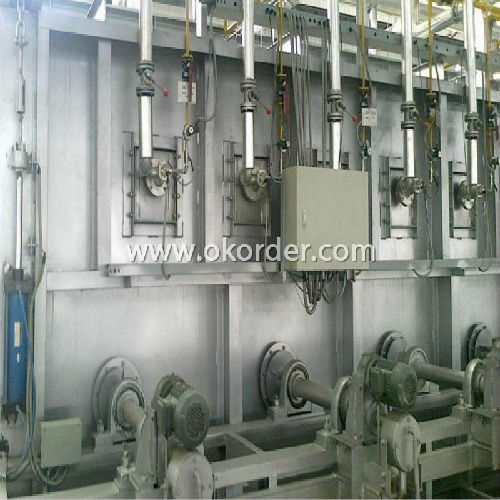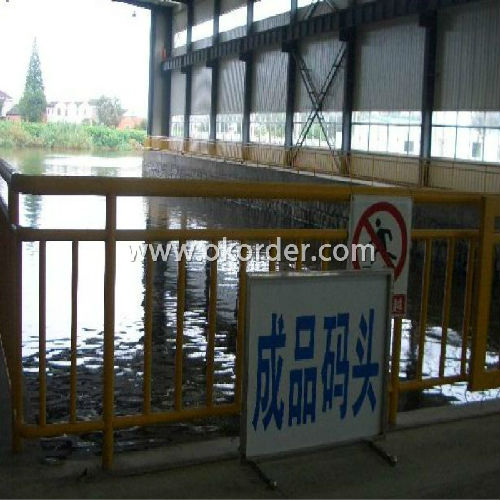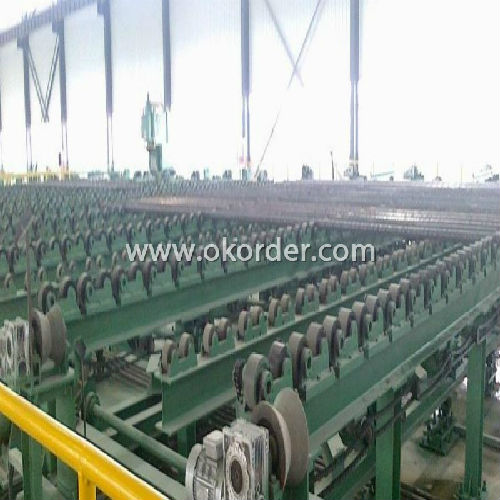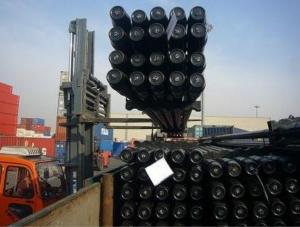Oilfield Drill Pipe API 5DP
- Loading Port:
- Shanghai Port
- Payment Terms:
- TT or LC
- Min Order Qty:
- 50 MT m.t.
- Supply Capability:
- 5000 Tons Per Month m.t./month
OKorder Service Pledge
OKorder Financial Service
You Might Also Like
Specifications for Oilfield Drill Pipe API 5DP
|
|
|
|
|
|
|
|
|
|
|
|
|
|
|
|
|
| Designations |
| Pipe body |
| Calculated weight |
|
|
| Upset dimensions |
|
|
|
| |||
|
|
|
|
|
|
|
| OD |
| Length of | Length of | Length of | Length of | Length end of |
| |
|
|
|
|
|
|
|
|
| ID at End |
| ||||||
| Size | Nominal | OD | WT | ID | Plain end | Upset |
| internal | internal | external | external | pipe to taper |
| ||
|
| of Pipe | upset | taper | upset | taper | fade out |
| ||||||||
|
| weight |
|
|
|
|
|
|
|
| ||||||
|
|
|
|
|
|
| +1/8 | ±1/16 | +1 1/2 | Min. | Min. | Min. | Min. | Max. |
| |
|
|
|
|
|
|
|
|
| ||||||||
|
|
|
|
|
|
|
| -1/32 | - 1/2 |
| ||||||
|
|
|
|
|
|
|
|
|
|
|
|
|
|
| ||
| in | lb/ft | in | in | in | lb/ft | lb/ft | in | in | in | in | in | in | in | in |
|
|
|
|
|
|
|
|
|
|
|
|
|
|
|
| ||
D | t | d | wpe | ew | Dou | dou | Liu | miu | Leu | meu | meu | Leu+meu |
| |||
|
|
|
| |||||||||||||
|
|
|
|
|
|
|
| 0Internal upset |
|
|
|
|
|
|
| |
|
|
|
|
|
|
|
|
|
|
|
|
|
|
|
| |
2 7/8 | 10.40 | 2.875 | 0.362 | 2.151 | 9.72 | 3.20 | 2.875 | 1 15/16 | 1 3/4 | 1 1/2 | - | - | - | - |
| |
|
|
|
|
|
|
|
|
|
|
|
|
|
|
|
|
|
|
| 9.50 | 3.500 | 0.254 | 2.992 | 8.81 | 4.40 | 3.500 | 2 1/4 | 1 3/4 | - | - | - | - | - |
|
3 1/2 |
|
|
|
|
|
|
|
|
|
|
|
|
|
|
| |
13.30 | 3.500 | 0.368 | 2.764 | 12.31 | 4.40 | 3.500 | 1 15/16 | 1 3/4 | 1 1/2 | - | - | - | - |
| ||
|
|
|
|
|
|
|
|
|
|
|
|
|
|
|
|
|
|
| 15.50 | 3.500 | 0.449 | 2.602 | 14.63 | 3.40 | 3.500 | 1 15/16 | 1 3/4 | 1 1/2 | - | - | - | - |
|
|
|
|
|
|
|
|
|
|
|
|
|
|
|
|
|
|
4 | 11.85 | 4.000 | 0.262 | 3.476 | 10.46 | 4.20 | 4.000 | 2 15/16 | 1 3/4 | - | - | - | - | - |
| |
|
|
|
|
|
|
|
|
|
|
|
|
|
|
| ||
14.00 | 4.000 | 0.330 | 3.340 | 12.93 | 4.60 | 4.250 | 2 3/4 | 1 3/4 | 2 | - | - | - | - |
| ||
|
|
| ||||||||||||||
|
|
|
|
|
|
|
|
|
|
|
|
|
|
|
| |
4 1/2 | 13.75 | 4.500 | 0.271 | 3.958 | 12.24 | 5.20 | 4.750 | 3 3/8 | 1 3/4 | - | - | - | - | - |
| |
|
|
|
|
|
|
|
|
|
|
|
|
|
|
|
| |
5 | 16.25 | 5.000 | 0.296 | 4.408 | 14.87 | 6.60 | 5.000 | 3 3/4 | 1 3/4 | - | - | - | - | - |
| |
|
|
|
|
|
|
|
|
|
|
|
|
|
|
|
|
|
|
|
|
|
|
|
|
| 0External upset |
|
|
|
|
|
|
| |
|
|
|
|
|
|
|
|
|
|
|
|
|
|
|
| |
2 3/8 | 6.65 | 2.375 | 0.280 | 1.815 | 6.26 | 1.80 | 2.656 | 1.815 | - | - | 1 1/2 | 1 1/2 | - | 4 |
| |
|
|
|
|
|
|
|
|
|
|
|
|
|
|
|
| |
2 7/8 | 10.40 | 2.875 | 0.362 | 2.151 | 9.72 | 2.40 | 3.219 | 2.151 | - | - | 1 1/2 | 1 1/2 | - | 4 |
| |
|
|
|
|
|
|
|
|
|
|
|
|
|
|
|
|
|
|
| 9.50 | 3.500 | 0.254 | 2.992 | 8.81 | 2.60 | 3.938 | 2.992 | - | - | 1 1/2 | 1 1/2 | - | 4 |
|
3 1/2 |
|
|
|
|
|
|
|
|
|
|
|
|
|
|
| |
13.30 | 3.500 | 0.368 | 2.764 | 12.31 | 4.00 | 3.938 | 2.602 | 2 1/4 | 2 | 1 1/2 | 1 1/2 | - | 4 |
| ||
|
|
|
|
|
|
|
|
|
|
|
|
|
|
|
|
|
|
| 15.50 | 3.500 | 0.449 | 2.602 | 14.63 | 2.80 | 3.938 | 2.602 | - | - | 1 1/2 | 1 1/2 | - | 4 |
|
|
|
|
|
|
|
|
|
|
|
|
|
|
|
|
|
|
4 | 11.85 | 4.000 | 0.262 | 3.476 | 10.46 | 5.00 | 4.500 | 3.476 | - | - | 1 1/2 | 1 1/2 | - | 4 |
| |
|
|
|
|
|
|
|
|
|
|
|
|
|
|
| ||
14.00 | 4.000 | 0.330 | 3.340 | 12.93 | 5.00 | 4.563 | 3.340 | - | - | 1 1/2 | 1 1/2 | - | 4 |
| ||
|
|
| ||||||||||||||
|
|
|
|
|
|
|
|
|
|
|
|
|
|
|
|
|
|
| 13.75 | 4.500 | 0.271 | 3.958 | 12.24 | 5.60 | 5.063 | 3.958 | - | - | 1 1/2 | 1 1/2 | - | 4 |
|
4 1/2 |
|
|
|
|
|
|
|
|
|
|
|
|
|
|
| |
16.60 | 4.500 | 0.337 | 3.826 | 14.98 | 5.60 | 5.063 | 3.826 | - | - | 1 1/2 | 1 1/2 | - | 4 |
| ||
|
|
|
|
|
|
|
|
|
|
|
|
|
|
|
|
|
|
| 20.00 | 4.500 | 0.430 | 3.640 | 18.69 | 5.60 | 5.063 | 3.640 | - | - | 1 1/2 | 1 1/2 | - | 4 |
|
|
|
|
|
|
|
|
|
|
|
|
|
|
|
|
|
|
Good price Oilfield Drill Pipe API 5DP with high quality,
1)Packaging:Steel strip or as request.
2)Delivery:Container or bundle .
3)Production Flow: Drill pipes are steel tubes with threaded ends that are used to connect a drill rig’s surface equipment with its drilling equipment, or bottomhole assembly, at the bottom of a well.They are used to transport drilling fluid to drill bits, and to raise, lower and rotate the bottomhole assembly along with the drill bit. Drill pipes must be manufactured to withstand severe internal and external pressure, distortion, bending and vibration. They are reusable and are not considered consumables in the process of exploring for and extracting oil and gas. Green pipes, raw steel tubes, are processed through a number of steps to make them into drill pipes. First, the walls of green pipes are thickened by a process called "upsetting" through which a pipe’s exterior surface is pushed inward. Next, the pipes are threaded and receive a strength-enhancing copper plating.Nondestructive quality control inspection then takes place, after which the pipes are welded to tool joints. Pipes then undergo weld heat treatments and a weld finishing processes that removes welding stress. More tests, including hardness, pressure and non-destructive inspection are carried out on the finished drill pipes before final coating and packaging.
Details for Oilfield Drill Pipe API 5DP with pictures shown as below,



Welcome to order from us for Oilfield Drill Pipe API 5DP .
- Q:What are the limitations of using steel pipes?
- There are several limitations to using steel pipes in various applications. Firstly, steel pipes can be quite expensive compared to other materials such as plastic or copper. This cost factor can be a significant limitation for projects with tight budgets. Secondly, steel pipes are susceptible to corrosion. Over time, exposure to moisture and certain chemicals can cause steel pipes to rust and deteriorate. This can lead to leaks, reduced structural integrity, and ultimately, the need for costly repairs or replacement. Another limitation of steel pipes is their weight and rigidity. Steel pipes are generally heavier and less flexible than other types of pipes, making them more challenging to install and maneuver in certain settings. Additionally, their rigid nature makes them less suitable for applications that require significant movement or flexibility. Furthermore, steel pipes can be prone to thermal expansion and contraction. When exposed to extreme temperatures, steel pipes can expand or contract, potentially causing stress on joints, fittings, or other components. This can lead to leaks or even pipe failure if not properly accounted for. Lastly, steel pipes are not as resistant to certain chemicals or substances as other materials. Some chemicals can corrode or erode the inner lining of steel pipes, compromising their integrity and potentially causing contamination or leakage. While steel pipes have many advantages, it is important to consider these limitations when deciding on the most suitable material for a specific application.
- Q:What are the different methods of insulation for steel pipes?
- There are several methods of insulating steel pipes, including applying a thermal insulation coating, using pipe wraps or jackets, using foam insulation, or utilizing heat shrink sleeves.
- Q:How are steel pipes used in the transportation of fluids?
- Steel pipes are commonly used in the transportation of fluids due to their durability, strength, and corrosion resistance. They are used in various industries, including oil and gas, water supply, and chemical processing, to transport liquids and gases over long distances. The seamless construction of steel pipes ensures a smooth flow of fluids, reducing friction and pressure loss. Additionally, their ability to withstand high temperatures and pressures makes them ideal for transporting fluids safely and efficiently.
- Q:How are steel pipes protected against seismic activities?
- Steel pipes are protected against seismic activities through various measures such as designing them to be flexible and resilient, using seismic joints and hangers, and implementing proper anchoring and support systems. Additionally, steel pipes are often coated with protective materials to enhance their resistance to corrosion and other external factors that may be triggered by seismic events.
- Q:What are the common standards for steel pipe manufacturing?
- Steel pipe manufacturing is regulated by various common standards that guarantee the excellence and uniformity of the products. One of the most renowned standards is the American Society for Testing and Materials (ASTM) standard, which encompasses diverse specifications for different kinds of steel pipes. These specifications encompass dimensions, mechanical properties, and testing prerequisites. Another widespread standard is the American National Standards Institute (ANSI) standard, which establishes directives for the manufacturing procedure, material requirements, and performance attributes of steel pipes. ANSI standards are commonly employed in industrial applications and construction undertakings. Furthermore, international standards such as the International Organization for Standardization (ISO) standard exist, providing guidelines for the design, production, and testing of steel pipes. The ISO standard ensures that steel pipes align with global quality and safety standards. Moreover, specific industries may have their own standards for steel pipe manufacturing. For instance, the American Petroleum Institute (API) has devised standards exclusively for oil and gas industry applications. These standards, like API 5L, outline requirements for the manufacturing, testing, and inspection of steel pipes employed in the transportation of oil and gas. Ultimately, these common standards for steel pipe manufacturing play a vital role in guaranteeing the quality, dependability, and safety of the products. They establish a standardized framework that manufacturers can adhere to, enabling customers to have confidence in the performance and durability of the steel pipes they acquire.
- Q:What are steel pipes used for?
- Steel pipes are used for a wide range of applications in various industries. One of the most common uses of steel pipes is for transporting fluids and gases. They are extensively used in oil and gas pipelines to transport oil, natural gas, and other petroleum products over long distances. Steel pipes are also used in water supply systems, both for domestic and industrial purposes. In the construction industry, steel pipes are used for structural purposes. They provide excellent strength and durability, making them ideal for constructing buildings, bridges, and other infrastructure. Steel pipes are also used in the construction of high-rise buildings, as they can withstand heavy loads and provide stability. Steel pipes are widely used in the manufacturing industry as well. They are used in the production of machinery, equipment, and vehicles. Steel pipes are commonly used for conveying materials such as coal, ore, and grain in bulk handling systems. They are also used in the manufacturing of automotive parts, such as exhaust systems, chassis, and suspension components. Furthermore, steel pipes have various applications in the energy sector. They are used in power plants to transport steam and hot water, as well as in the production and distribution of electricity. Steel pipes are also used in the renewable energy sector, particularly in the construction of wind turbine towers and solar panel frameworks. In addition to these major applications, steel pipes are also used in plumbing systems, irrigation systems, and in the construction of fences and railings. They are highly versatile and can be customized to meet specific requirements in terms of size, thickness, and coating. Overall, steel pipes play a crucial role in many industries and are essential for transporting fluids, constructing infrastructure, and manufacturing various products. Their strength, durability, and versatility make them a preferred choice among engineers and professionals in different fields.
- Q:What is the weight and strength of steel pipes?
- The weight and strength of steel pipes can vary depending on the specific type and dimensions of the pipe. Steel pipes can range in weight from lightweight options used for plumbing purposes to heavy-duty pipes used in industrial applications. Similarly, the strength of steel pipes can vary, with factors such as the grade of steel and the manufacturing process influencing their strength. It is essential to consult specific specifications or industry standards to determine the weight and strength of a particular steel pipe.
- Q:How are steel pipes used in firefighting systems?
- Steel pipes are used in firefighting systems to transport water or other fire-suppressing agents from a water source to the location of a fire. These pipes are durable and resistant to heat, making them suitable for carrying large volumes of water at high pressure to extinguish fires effectively. Additionally, steel pipes are often used for underground or overhead fire hydrant systems, sprinkler installations, and standpipe systems in buildings to ensure a reliable and efficient firefighting infrastructure.
- Q:Can steel pipes be used for underground sewerage systems?
- Yes, steel pipes can be used for underground sewerage systems. Steel pipes are commonly used in underground sewerage systems due to their durability, strength, and resistance to corrosion. They can withstand the weight of the soil and provide a long-lasting solution for transporting wastewater underground. Additionally, steel pipes are often preferred for larger diameter sewerage systems where high strength and structural integrity are crucial.
- Q:What are the different testing methods used for steel pipes?
- To ensure the quality and reliability of steel pipes, various testing methods are employed. These methods include: 1. Non-destructive Testing (NDT): Ultrasonic testing, magnetic particle inspection, and liquid penetrant testing are utilized in NDT to identify surface or subsurface defects in steel pipes without causing any damage. 2. Mechanical Testing: Mechanical testing encompasses various tests to evaluate the mechanical properties of steel pipes, such as tensile strength, yield strength, elongation, hardness, and impact resistance. These tests determine the structural integrity and performance of the pipes. 3. Hydrostatic Testing: This method involves subjecting steel pipes to high-pressure water to assess their ability to withstand expected operating conditions. The pipes are filled with water and pressurized to a predetermined level for a specified duration. Any leaks or deformations are detected during this test. 4. Dimensional Inspection: This testing method ensures that steel pipes meet specified dimensional requirements. It involves measuring critical dimensions such as diameter, wall thickness, and length to verify compliance with applicable standards. 5. Visual Inspection: Trained inspectors visually assess the external appearance of steel pipes using this basic method. They examine the pipes for surface defects such as cracks, corrosion, or irregularities in shape or finish. 6. Chemical Analysis: Chemical analysis is conducted to determine the composition and elemental content of steel pipes. It ensures that the pipes are made from the correct grade of steel and meet required chemical composition standards. 7. Metallographic Examination: Metallography involves examining the microstructure of steel pipes under a microscope to evaluate their quality and integrity. It helps identify internal defects like grain boundaries, inclusions, or improper heat treatment that may impact overall performance. By employing these testing methods, manufacturers and inspectors can guarantee that steel pipes meet necessary quality standards and are suitable for their intended applications.
1. Manufacturer Overview |
|
|---|---|
| Location | Wuxi, China |
| Year Established | 1991 |
| Annual Output Value | 300,000Tons |
| Main Markets | Europe; Southeast Asia; etc. |
| Company Certifications | API 5L;API 5CT;API Q1;ISO/TS29001 |
2. Manufacturer Certificates |
|
|---|---|
| a) Certification Name | |
| Range | |
| Reference | |
| Validity Period | |
3. Manufacturer Capability |
|
|---|---|
| a)Trade Capacity | |
| Nearest Port | Wuxi; Shanghai |
| Export Percentage | 41% - 50% |
| No.of Employees in Trade Department | 3900-4000 People |
| Language Spoken: | English; Chinese; Spanish |
| b)Factory Information | |
| Factory Size: | Above 450,000 square meters |
| No. of Production Lines | Above 10 |
| Contract Manufacturing | OEM Service Offered;Design Service Offered |
| Product Price Range | Average |
Send your message to us
Oilfield Drill Pipe API 5DP
- Loading Port:
- Shanghai Port
- Payment Terms:
- TT or LC
- Min Order Qty:
- 50 MT m.t.
- Supply Capability:
- 5000 Tons Per Month m.t./month
OKorder Service Pledge
OKorder Financial Service
Similar products
New products
Hot products
Related keywords





























